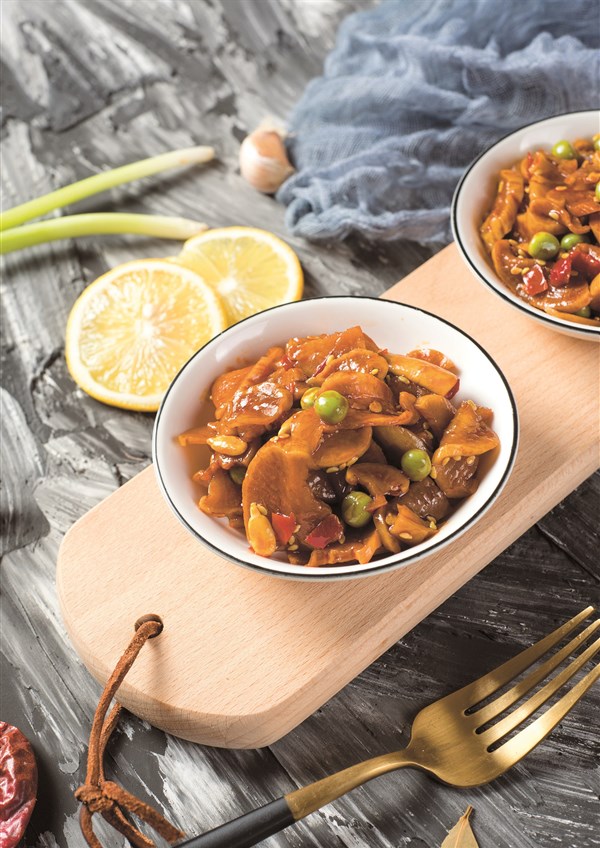Jiangcai
Jiangcai – along with other preserved and pickled condiments in China such as zhacai and paocai – was originally made to preserve vegetables during times of food scarcity, such as in winter when fresh produce was in short supply.
Jiangcai can be made with a variety of vegetables including radishes, lotus roots, garlic sprouts and asparagus lettuce. In Shanghai, jiangcai remains a crucial part of the dinner table – known for its salty and sour taste and perfection in color, aroma and taste.

A delectable serving of Shanghai-style jiangcai. [Photo/touch.shio.gov.cn]
Shanghai-style jiangcai is typically made using vegetables such as white radish and cucumber and soy products like dried bean curd. These ingredients are soaked and pickled to develop a unique taste and flavor.
The production of jiangcai involves intricate traditional techniques and takes a significant amount of time.
The pickling demands high-quality ingredients, precise control over time and the right proportions to ensure the quality and flavor of the pickles.
In Shanghai, the most popular jiangcai trio are pickled eggplants from Songjiang district, pickled gherkins (small cucumbers) from Minhang district, and pickled snake cucumbers from Chongming district.
When paired with plain congee, these pickles create simple Chinese comfort meals that can provide warmth and comfort for the stomach and heart.
Sources: touch.shio.gov.cn, "jinshanrongmei" "jinrisheshan" WeChat accounts

